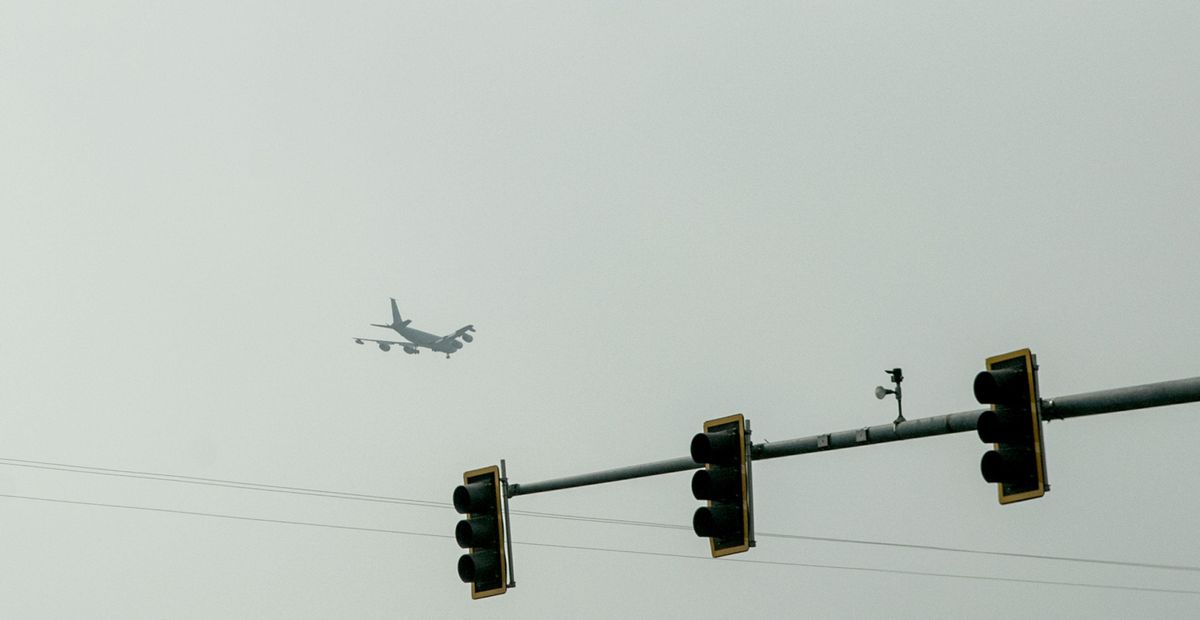Winds to push wildfire smoke out of Spokane, but relief may be short-lived

The smoky haze that settled on Spokane this week started making its way out Friday, leaving record-setting choking conditions in its wake.
Spokane County ended its smokiest week on record with the Spokane Clean Air Agency, which has been tracking fine wildfire smoke particulates in the air since the late 1990s, said Stephanie May, a spokeswoman with the agency. Thursday’s air quality score was the worst in a four-day span that saw readings persist in the very unhealthy category, prompting area schools to take precautionary measures, football teams to cancel Friday night contests and those trekking outdoors to consider donning protective masks throughout the region.
Conditions improved throughout the day Friday ahead of the arrival of an expected cold front on Saturday. By Friday afternoon, readings at Spokane County’s five air quality monitoring stations had fallen below 200 on a scale from 1 to 500, into a category air quality agencies call unhealthy for everyone but below emergency conditions. Sensitive groups, like children, the elderly and those with breathing problems, may still experience serious health effects.
Jon Fox, a meteorologist for the National Weather Service in Spokane, said the slow improvement Friday would likely give way to faster clearing on Saturday.
“The cold front itself really comes tomorrow, then we’ll see pretty rapid improvement,” Fox said. An air quality alert that was supposed to expire for the region at noon Friday was instead extended to 10 a.m. Monday.
The relief may be short-lived. The Weather Service reports winds will weaken Sunday and Monday, which could trigger additional air quality concerns as smoke rebuilds in the region.
Even if the poor air quality extends into next week, those without chronic breathing problems shouldn’t be at risk for long-term lung damage, said Mark La Shell, a Seattle-based allergist and immunologist with the insurance and health care provider Kaiser Permanente.
“The more likely thing is those with pre-existing lung conditions would have more trouble,” said La Shell.
Wildfire particulates are smaller than ash, dust or mold, which are typically filtered by the nose and other portions of the upper respiratory system before they get to the lungs, La Shell said.
“The general idea is the larger particulate matter is only going to be involved in your eyes and upper airway,” he said.
La Shell said those susceptible to breathing problems should track the pollution levels, limit time outside and keep any medications, like an inhaler, close at hand.
Air pollution agencies use the 500-point scale to measure particulate matter. Numbers 300 or higher are considered “hazardous.” Numbers 200 or more are considered “very unhealthy.”
North Idaho also experienced some improvement, but conditions remained unhealthy Friday afternoon. Monitors near Hayden and Kellogg and in Plummer, St. Maries and Lewiston showed “unhealthy” air at 1 p.m., according to the state Department of Environmental Quality. Sandpoint’s air remained very unhealthy Friday afternoon. Monitors near the Canadian Border measured “hazardous” air.
The Idaho DEQ lifted a four-day statewide air quality alert Friday morning after improvements in eastern Idaho, but much of the state remained under a heavy pall of smoke; restrictions continue on a region-by-region basis. The state’s worst air, with an air quality index reading of 427, was recorded at Porthill in North Idaho, 26 miles north of Bonners Ferry.
Amanda Richards, a clerk at the Porthill Mercantile, stifled a cough Friday afternoon. “We’re socked in from all sides,” she said. “I can’t see either mountain range on either side of us,” though they normally loom close over the scenic community of 70.
An air quality alert in North Idaho was also extended through 10 a.m. Monday.
The relief comes after Spokane set a record Thursday for the worst air quality over a 24-hour period. The Clean Air Agency began tracking days the region’s air was considered unhealthy in 1999.
Air quality levels first reached the unhealthy category Monday afternoon, and topped out at an average reading of air pollution from particulate matter 2.5 microns or less of 254 on Tuesday, setting a record. Thursday saw slightly worse conditions, with a reading of 256. Stagnation is likely to blame for Thursday’s higher reading, said Stephane May, a spokeswoman for the Clean Air Agency.
“I think you could kind of notice in the air, it felt a little thicker,” she said. “It was prolonged. It stayed in that range basically the whole day.”
The ratings are based on a 24-hour average, and while this week has seen the most prolonged period of poor air quality due to wildfire smoke in recent memory, readings were still below the spike seen during a bout of wildfires in Central Washington in August 2015 that gave Spokane the blood red-tinged sun that has become familiar in recent days.
Readings in the thick of that smoke-filled week two years ago peaked at 345, well into the hazardous category. The highest hourly reading recorded this week was 303, recorded at 7 p.m. Monday, according to numbers provided by the Spokane Clean Air Agency.
The stagnation that led to Thursday’s record-breaking air quality is the result of a high pressure system that has dwelled over the region, trapping the smoke of wildfires burning in western Montana and British Columbia, Canada, Fox said.
“You get a bunch of wind ahead of a cold front, that can transport the smoke. The winds will move it somewhere else,” he said.
Staff writer Betsy Z. Russell contributed to this report.